Floor tiles for the kitchen. How to furnish a kitchen: ceramic flooring
It is not easy to give a definite answer to the question of which tile is best for the kitchen floor. When choosing a facing material for any room, it is important to take into account a number of factors, from the general style to the properties of the tile.
Interior with an emphasis on the floor
Features of the room
When deciding how to choose tiles for the kitchen, namely for the floor, it is important to take into account the specifics of the room.
There are several defining features:
- constant temperature changes;
- frequent contact of surfaces with dirt, grease and water;
- rapid abrasion of floor cladding;
- use of household chemicals in care;
- possibility of mechanical damage to the coating.
Since the surfaces in the kitchen are constantly in contact with water, it is important to choose a material for the floor that will not let it through and will not slip.
Based on these factors, it is clear that floor tiles must be wear-resistant, durable and have an appropriate external coating. The best option would be tiles of class 3 and higher.

When choosing ceramics for the kitchen, take into account the characteristics of the room
Types of materials
Floor coverings are more durable, wear-resistant and thicker. You cannot use the same tiles for the floor as on the walls. The market for facing materials has a separate category of products for finishing floors and surfaces with heavy loads.
- Ceramic. It can be of any color, glazed glossy or matte, with a smooth surface or embossed.
- Porcelain tiles. This is a more advanced material, has a low-porous structure, and therefore does not allow water to pass through and is famous for its unique strength. Ideal for floors.
- A natural stone. Marble is often purchased. This is an expensive and also slippery material, so it is installed in homes where the kitchen is rarely used.

Types of floor tiles
Usually the choice is limited to the usual ceramic tiles. It is available and has a wide range. In terms of characteristics, porcelain tile wins, but it is more expensive and heavier.
Specifics of style and color
To determine which tile is best to put on the floor in the kitchen, you first need to consider the design project of the room. The basic feature in this case is the style and color palette. After choosing a direction, you can begin to search for material that meets certain technical characteristics and the chosen style:
- Classic. The tones of the tiles are restrained, close to natural: white, beige, brown. Imitation of wood texture, stone and marble are suitable.
- Modern. Restrictions are removed, any cladding is used. These are mainly monochromatic coatings from achromatic to bright neon colors. The floor is matched to the surrounding interior.
- Minimalism and hi-tech. A minimum of details, simple tiles without unnecessary decor or color splashes. An achromatic palette is suitable here: white, gray, black.
- Country. Rustic style and requirements for flooring are in some ways similar to classics. In this case, it is better to give preference to light shades.
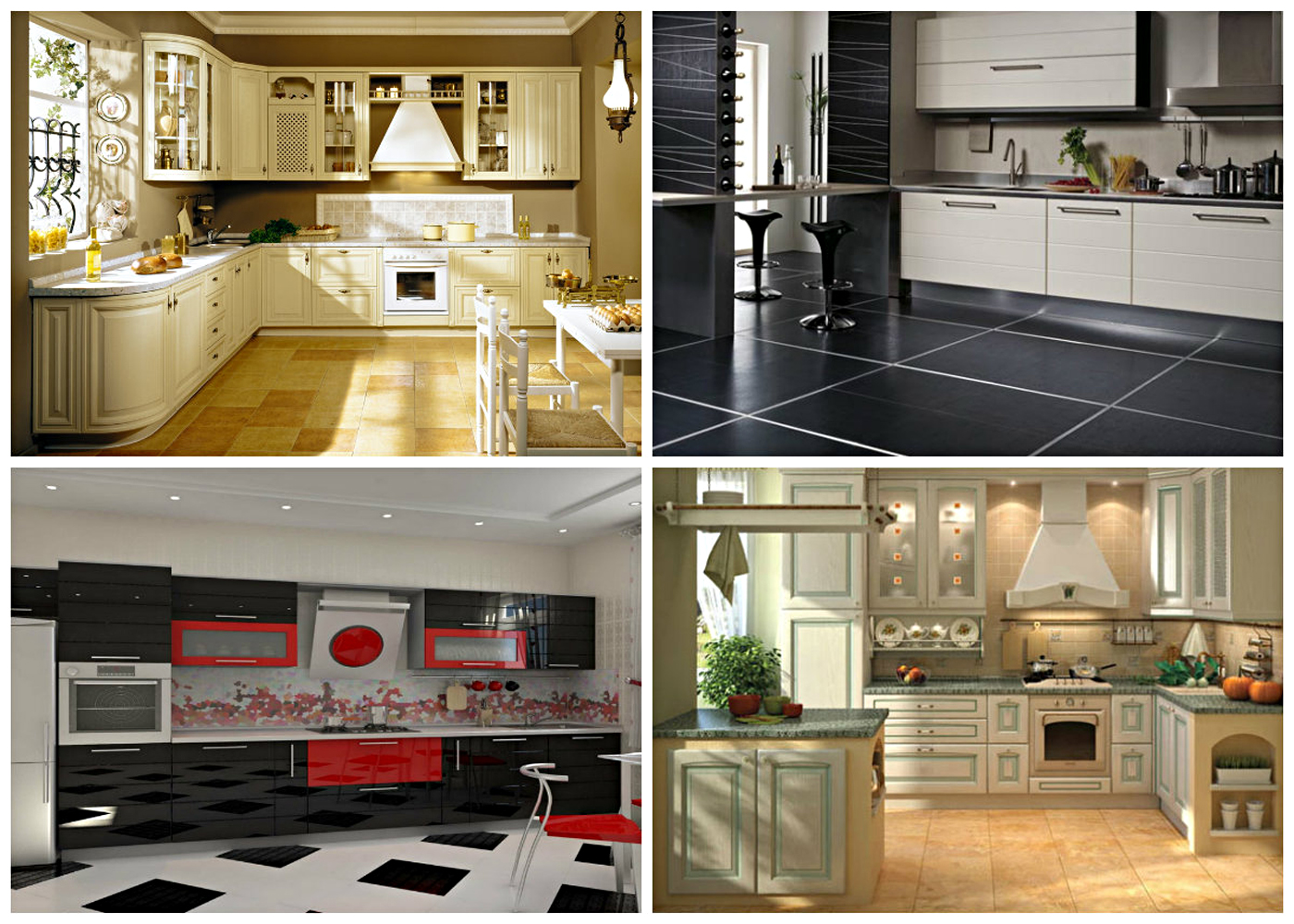
Kitchen interior design options
The color of the floor should stand out, but not be conspicuous. Considering that the kitchen floor is constantly subject to contamination, tiles with stains, crumbs and other similar textures are laid. Please note that drops of water will be visible on glossy tiles, while matte and embossed tiles are more difficult to clean.
Optimal dimensions
Another nuance is the size of the tiles. To choose the right one, evaluate the area and identify areas of the surface that are accessible for viewing. If there is enough space, use any type of material. In order not to create a ripple effect, it is better to consider larger options.
However, in most apartments and houses the area of this room is limited, so it is better to choose medium floor tiles. These include tile sizes from 20x20 to 35x35. The lack of space will be less noticeable.
![]()
The dimensions of the kitchen affect the shape of the coating
With the help of correctly selected tiles, you can visually expand the room and change the perception of individual zones.
No less important factor than size is the shape of the tile and the laying pattern. A simple option for square fragments it is “seam to seam”. But if you lay them diagonally, the room will look more interesting and spacious. Rectangular tiles have an even greater effect; they are used to imitate a laminate coating.
Other characteristics
In addition to the above, in order to choose the right tiles for the floor, it is important to take into account other indicators, first of all, these are:
- Strength and wear resistance class. The kitchen is subject to a lot of stress and abrasion of surfaces, regardless of what types of materials are used. The minimum class of tiles should be 3, and the optimal class should be 4.
- Thickness. Corresponds to the declared category. Thin tiles will quickly collapse, and too bulky tiles will ruin the interior.
- Top coating. A glossy glaze is preferred. Check for an additional layer of treatment that prevents slipping on the surface.
- Manufacturer. Choose a company with a good reputation, since the quality of the raw materials used and adherence to technology are important.
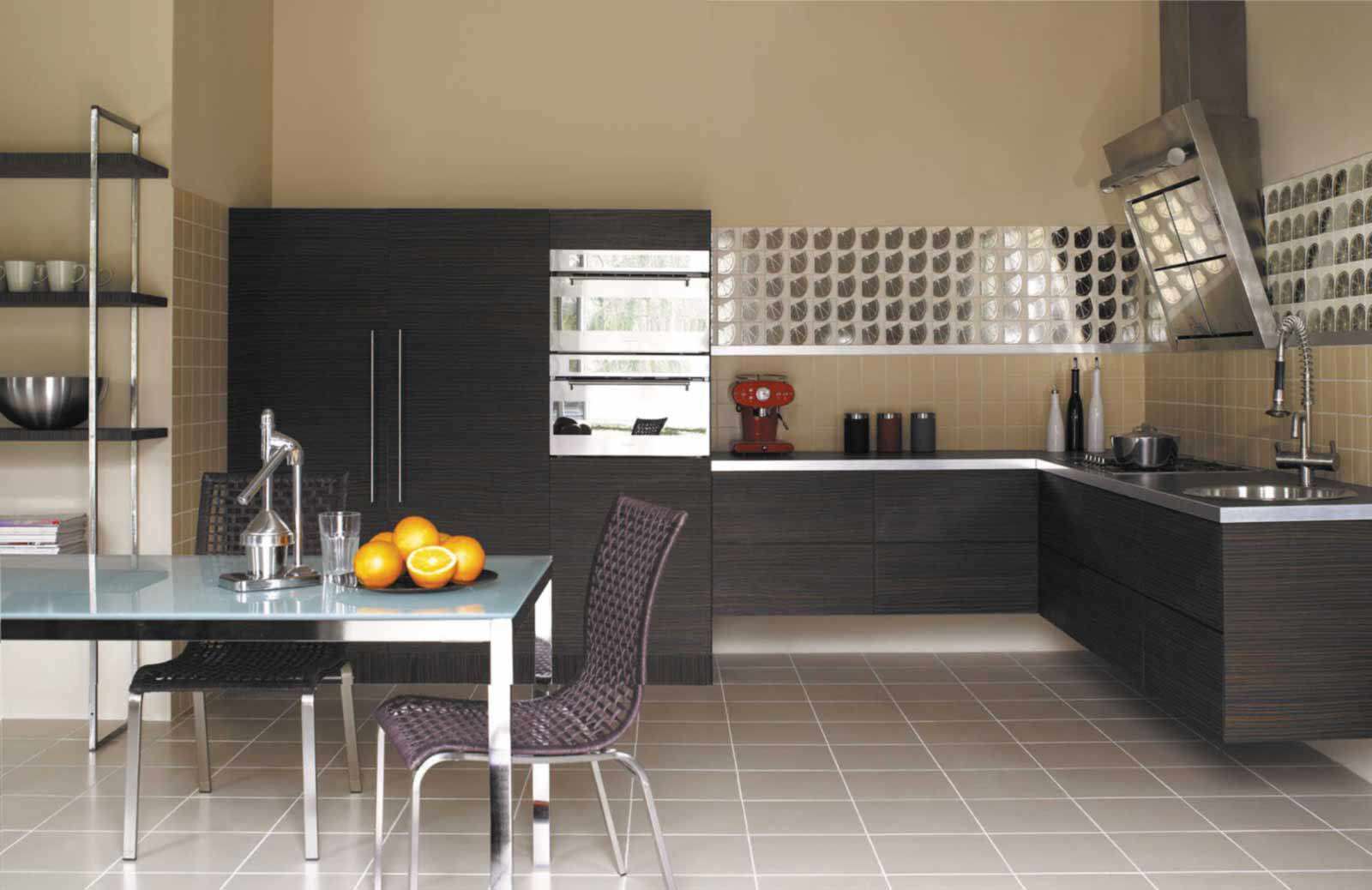
Consider each of the above factors carefully. This will allow you to benefit from the interior of the room and at the same time comply with the requirements regarding surface quality.
Ceramic tiles as a facing material for the kitchen are an absolutely logical choice. This surface can withstand different temperatures, humidity, and is resistant to household chemicals. Construction stores offer a chic assortment of tiles, but not every one is suitable for the kitchen. Before purchasing, arm yourself with our instructions to choose a truly worthwhile option.
It is natural for the kitchen to have a high load on surfaces and frequent cleaning. Therefore, the materials here must be of particularly high quality. According to the international PEI classification, tiles vary in strength. For kitchen walls, level III is required, and for the floor - IV-V, that is maximum levels. If the manufacturer indicates the strength of the product according to the GOST scale, focus on a class of at least five.


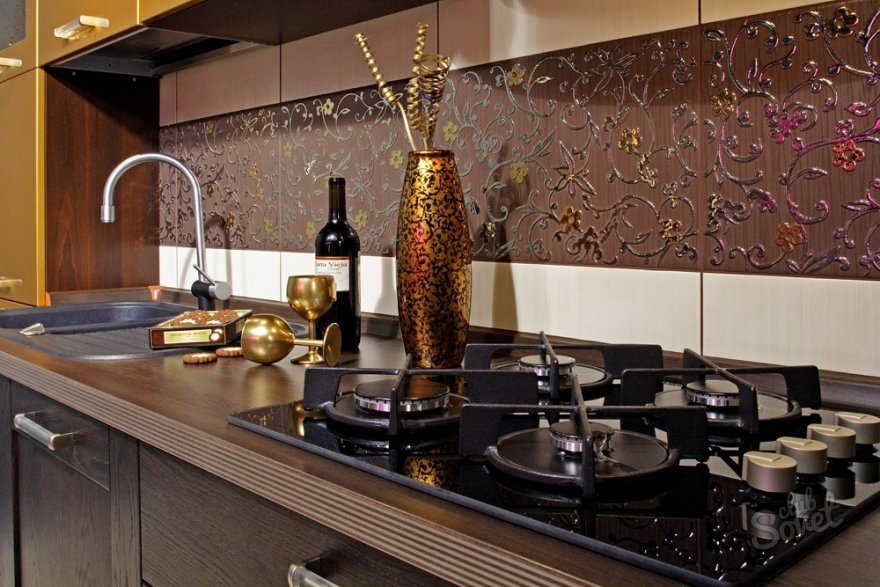
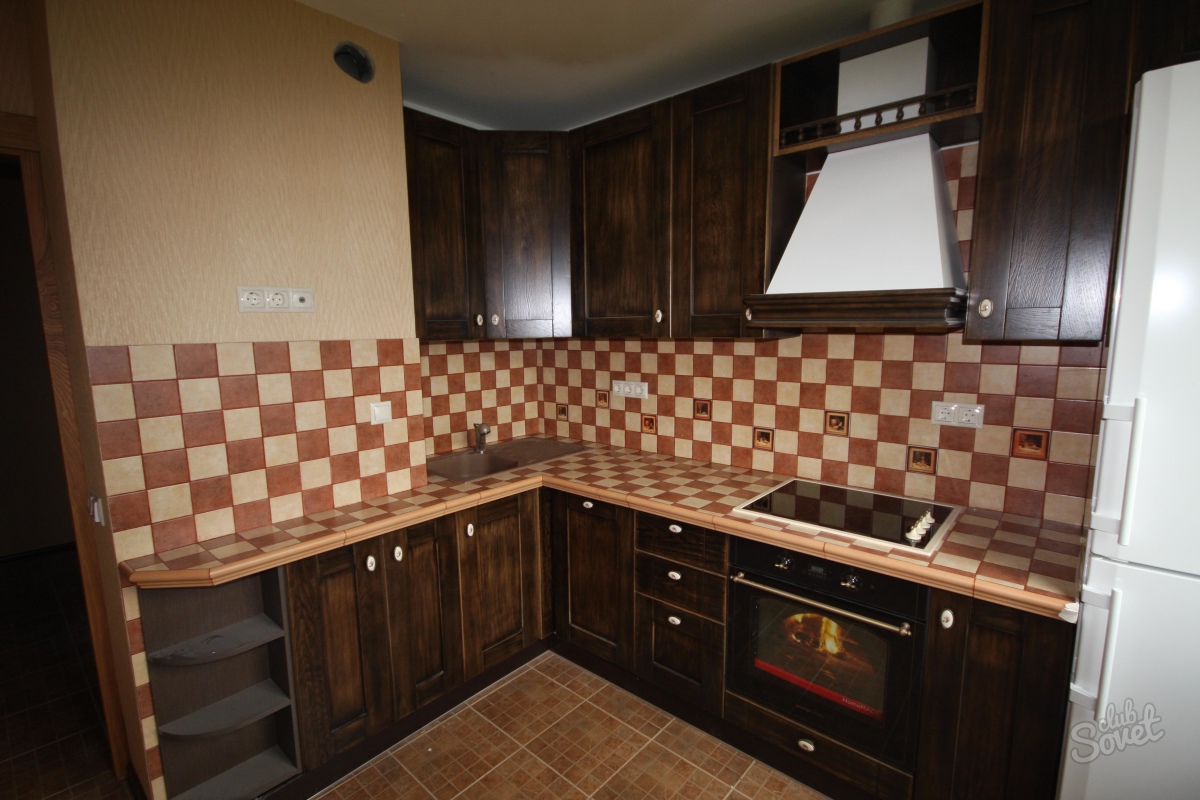
- maximum wear resistance;
- matte surface instead of gloss;
- slightly ribbed texture designed to ensure the safety of the finishing material;
- grainy or variegated colors that hide minor dirt.
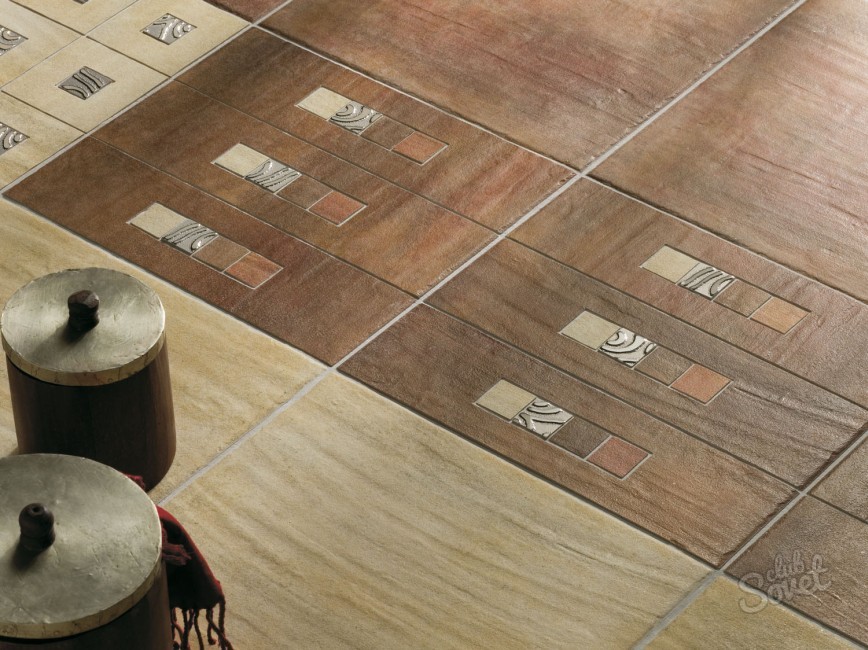
In general, kitchen tiles should meet the basic needs of a cook: not cause trouble in maintenance and be sufficiently resistant to all kinds of influences and damage. These properties will be present in samples with minimal porosity, with a dense and uniform enamel coating.
Anyone who has started a kitchen renovation will have a lot of trouble choosing the appropriate design option for the room and implementing the plan. The issue of choosing materials for finishing is no less important than the design project. As the main material for wall decoration, you can use washable wallpaper, lining, and even wood. But is this choice functional for the kitchen? Ceramic tiles have been considered the most practical option for many years. Due to its resistance to aggressive influences, environmental friendliness and always impeccable appearance. There are a great variety of tile options: they differ not only in color, texture and size, but there are also many differences in performance characteristics. To decide which tile is best for the kitchen, let’s take a closer look at all aspects of the choice.
- Wear resistance.
- Surface hardness.
- Resistance to temperature changes.
- Water absorption.
- Resistance to chemically aggressive influences.
- Slip resistance.
An example of the use of decorative elements in cladding
Wear resistance is the interest of conservatives
The service life of floor tiles largely depends on the suitability of the selected material to the expected loads.
Wear resistance, or in other words, abrasion resistance of floor tiles intended for the kitchen belongs to group 3, as an indicator of the abrasion of tiles for rooms with average traffic intensity. Indicated by the symbol PEI III.
Tile surface hardness
The hardness of the tile surface (determined according to the “MOOSA” scale) is an indicator that determines the ability of a material to resist scratches from various abrasive materials. A number from 1 to 10 in ascending order indicates scratch resistance. For kitchen tiles, a rating of 5 is sufficient.
Resistance to temperature changes
At first glance, resistance to temperature changes is not such an important indicator in a kitchen. But if you plan to tile a surface on which a hot kettle could be accidentally placed, then it is better to choose a tile with the appropriate indicators (at least 125°C).
Moisture absorption capacity
Moisture absorption and frost resistance depend on the porosity of the material. These indicators are important if the surface is to be finished in an unheated room.
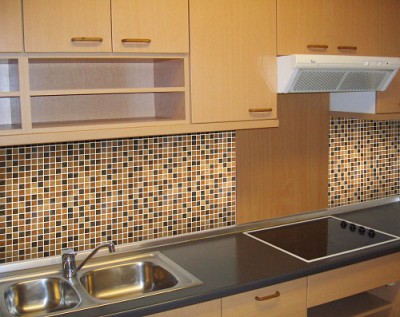
Option for wall cladding with mosaics
Resistance to chemical aggression
This indicator determines the degree of surface resistance to various household chemicals, as well as resistance to staining. The ability of a surface to resist staining is rated from a higher value (1) to a lower value (3), for a kitchen the optimal value is 1 or 2. The AA chemical resistance rating means that the product is not exposed to chemicals, the A rating means that the product is resistant to aggressive influence.
Anti-slip on the floor
The fact that tiles must be safe is beyond doubt. When choosing floor tiles, the main safety requirement is slip resistance. This indicator displays the friction coefficient. Most often it is measured according to DIN standards. For kitchen flooring, the corresponding indicator is R10, category A.

“Apron” cladding option
Which tile is better for the kitchen
If you plan to tile only part of the wall: the work surface above the sink, part of the wall near the hob and above the countertop (the so-called “apron”), then it is more advisable to choose small tiles correct form. It is possible to add a decorative frieze or insert decorative elements between even rows of tiles. The main thing is the coincidence of the sizes of the decor and the main tile; in the case of even a seemingly insignificant discrepancy of a few millimeters, the geometric alternation of elements will inevitably reveal a flaw. There will be stitches different sizes, which in turn will not decorate general form lined surface. A few words about grout for joints. You can choose the color of the grout to match the shade of the tile, or use a grout of a contrasting color (repeating the color of the floor covering or the color of the furniture). In any case, the use of a special plastic material for grouting joints will protect the tile covering from the development of mold and fungi, as well as from the possible lag of the tiles from the wall.
It is more difficult to clean a textured surface from drops of grease than a smooth one. Therefore, when choosing wall tiles, it is better to pay attention to tiles with a smooth surface. But when choosing floor tiles, it is better to pay attention to a matte or slightly embossed surface; on a smooth floor, small scratches will be more noticeable.
Use caution when buying tiles with a reserve. About 10% of the total volume of tiles will be useful to you for several reasons: firstly, in case of unforeseen troubles during installation, you will protect yourself from having to look for missing tiles in stores. Secondly, in this way you take into account the possibility of surface restoration in the future. It is important to consider that you can easily “miss the color” when purchasing tiles from the same collection, but from a different batch.
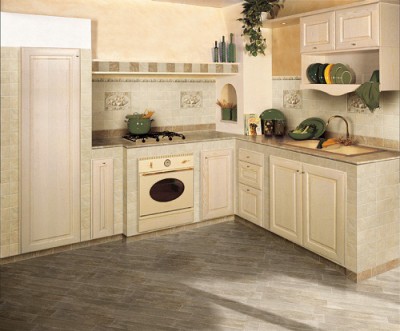
Unity of style between wall and floor tiles
When choosing the color of the finish, everyone is guided by personal preferences, but it often happens that the tiles seemed spectacular on the stand in the store, but for some reason they don’t look right at home. The fact is that when choosing the color, texture and pattern of tiles, several factors should be taken into account: lighting, room size, general stylistic direction in the interior. When choosing floor and wall tiles, it is important to consider the compatibility of colors and textures. There are also ready-made collections of tiles on sale, in which a combination of colors of decorative elements, wall and floor tiles has already been selected. You just need to take accurate measurements of the kitchen and calculate the required number of tiles of each type.
When choosing a facing tile, pay attention not only to its color, but also to its quality - evenness of corners, integrity of edges, quality of enamel, and so on. It is best to do this with a specialist who will lay these tiles, because in any business there are a lot of subtleties that the average consumer is not even aware of. Of course, there are no perfectly even tiles, but still. One of the indicators of the quality of a tile is the reputation of its manufacturer; you should not be tempted by cheapness - you risk buying a pig in a poke, and you should not chase very expensive brands - you will overpay for popularity. Here's a tip - always choose the golden mean.
Video guide to choosing tiles
As you can see, the issue of choosing tiles for the kitchen is easy to solve. You just need to show interest and arm yourself with relevant information on the topic.
There are no universal finishing materials, and you need to know how to choose tiles for the kitchen so that they fully meet the tasks facing it. After all, the requirements for tiles for decorating an apron over a workplace are slightly different than for the floor covering. And the tiles for a decorative panel on the wall are selected according to a different principle than the material for facing the countertop. Therefore, the decision about which tile to choose for the kitchen must be made depending on the intended location of its use.
Study carefully specifications material, read the passport and information indicated on the packaging. Also, be sure to ensure that you have a hygiene certificate, which confirms the safety of the purchased tiles for life and health. After all, the selection of tiles for the kitchen is carried out taking into account the fact that materials for residential premises must be impeccable from an environmental point of view.
Choosing ceramic floor tiles
Ceramic coating is a convenient, practical and profitable option for finishing floors. But when the question arises about what is better in the kitchen: tiles or linoleum, the choice is often made in favor of the latter. This happens primarily because tile is considered a cold material. At the moment, this problem can be easily eliminated using “warm floor” technology. Ordinary ceramic tiles are ideally suited for use in a heated floor system, because... it has quite high thermal conductivity.
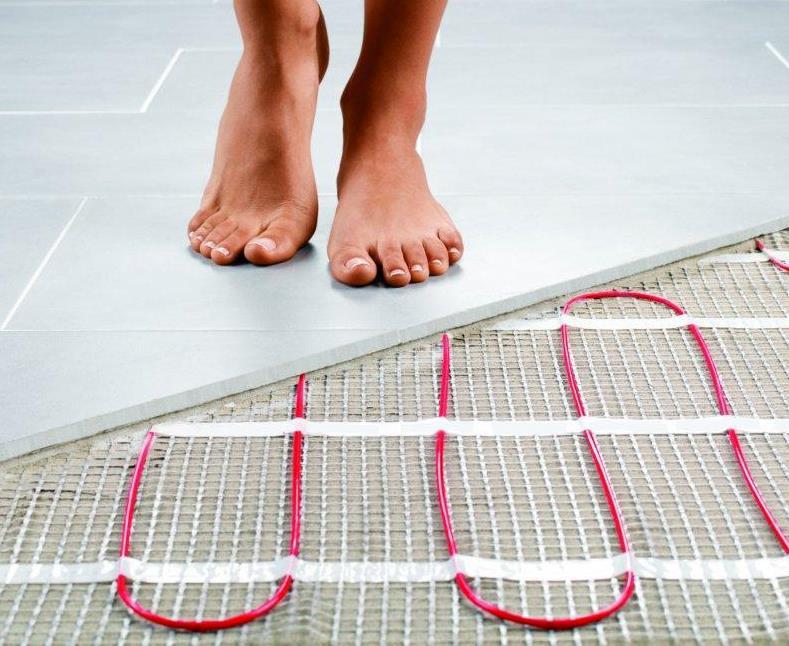
Another negative quality that limits the use of tiles for floor finishing is its slipperiness. How to choose tiles for the kitchen so that the floor is safe in this regard? Avoid glazed coatings, as moisture can turn a glossy floor surface into a real skating rink. Give preference to tiles with a matte, ribbed surface.
Which tile to choose for the kitchen floor: technical specifications
For floor finishing, manufacturers offer big choice ceramic tiles.
But you need to take into account that the kitchen floor is subjected to heavy loads every day, especially in the area of the stove and sink.
It gets dirty faster than in other rooms and, accordingly, it is washed more often. All this puts forward a number of specific requirements for kitchen flooring: it must have increased strength.
For the kitchen, tiles of at least class III of hardness according to the European classification PEI or at least class 5 in accordance with GOST are preferred. Resistance to acids and alkalis must also be high - class AA or B.
Floor tile design
We must not forget that the choice of ceramic tiles for finishing the floor depends on the overall stylistic decision of the kitchen. Of course, the color and texture of the flooring should be in harmony with the rest of the room’s decoration. But it is necessary to take into account a few more points.
On a glossy surface, stains and small debris will be very visible.
While the matte and grainy texture of ceramics will not only give the room a more comfortable look, but will also perfectly hide various stains. Variegated colors will also disguise some imperfections.
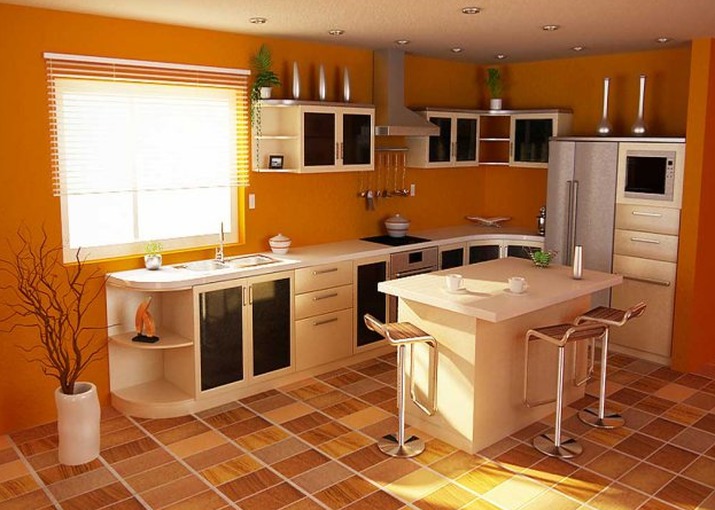
As for the shape, the choice of tiles for the kitchen does not have to be limited to the traditional square or rectangle. You can experiment with hexagonal or octagonal tiles. Manufacturers also offer samples with rounded edges.

If you use small floor tiles for tiling, the room will look more spacious. But it is more difficult to install, because... It is difficult to achieve even seams. It is better to use mosaic tiles in small fragments as finishing. You should not lay out complex designs on the floor - they are more suitable for rooms with a large area, for example, halls.
The work area in the kitchen is often decorated with a tiled apron. This material reliably protects walls from splashing water, high temperature, fat and soot. In addition, an elegant apron can become a bright decorative accent and decorate even the most modest kitchen. How to choose ceramic tiles so that they meet all the above requirements and, in addition, provide easy care for the surface of the walls?
Choosing tiles for the apron
The work area needs to be cleaned regularly using detergents. The selection of ceramic tiles for the backsplash should be made taking this factor into account. The tile requires minimal porosity, as well as a dense and uniform enamel coating.
Resistance to chemical influences is indicated by letter markings on the packaging. For our purposes, a tile with the symbol AA is suitable, which means high level resistance to aggressive substances.

But high strength for wall tiles is not critical, since there are practically no mechanical loads. Special attention Pay attention to such an indicator as the thermal resistance of the material. This is important for tiles above the work area, especially if you use them for cooking. gas stove. The glaze on high-quality tiles can withstand heat up to 125 degrees.
Tile design for kitchen backsplash
For an interior with a restrained design, choose a plain tile that matches the color of the rest of the kitchen elements. If it is difficult to find the right shade when selecting ceramic tiles, make the surface of the work area white - it is universal and will suit almost any color scheme.
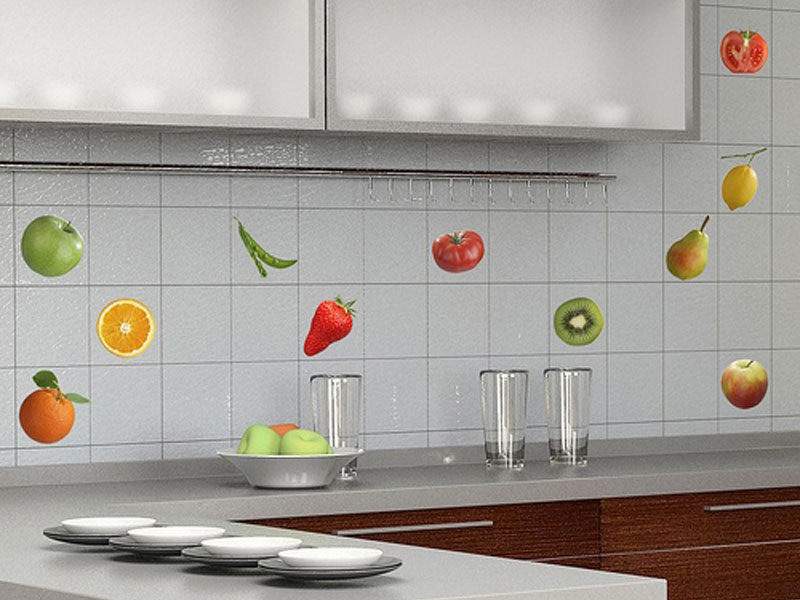
An interesting option is when the color of the apron is chosen in contrast to the kitchen set.
For example, combinations of orange with light green or coral with yellow will look fresh and unusual. But before choosing tiles for the kitchen in bright colors, soberly assess its size. Remember that such color solutions require a lot of space, otherwise the room will look cramped and too colorful. This rule also applies to large drawings and large-format tiles.

How to choose tiles for the kitchen if its area is small? Designers recommend decorating the apron and walls in one color, preferably beige, cream, light gray or sand. At the same time, it is worth abandoning the gloss, because... shiny surfaces visually reduce space.
Do not overload the surface of the working area with decorative inserts made of textured tiles. Oily deposits will accumulate in the relief of such tiles.
Ceramic tile countertops: pros and cons
Ceramics are not often used to decorate countertops. Meanwhile, the countertop, lined with tiles, looks no less worthy than models from natural stone, agglomerate or solid wood. At the same time, its production will cost less. But do not forget that the correct choice of ceramic tiles determines how strong and durable the desktop surface will be.
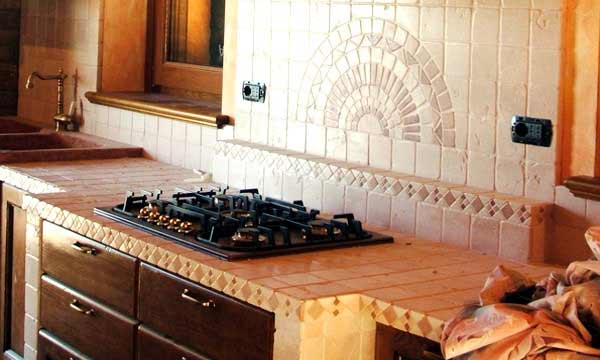
This finishing method has certain disadvantages: numerous seams create difficulties in maintenance, and also require regular special treatment, because The grout quickly changes color.
The countertop occupies a fairly large area, so its design has a noticeable impact on the perception of the entire kitchen interior.
Tile makes it possible to create a variety of design options. Most often, the working surface of the table is tiled with the same tiles as the kitchen apron. This technique allows you to create a single space and looks harmonious.
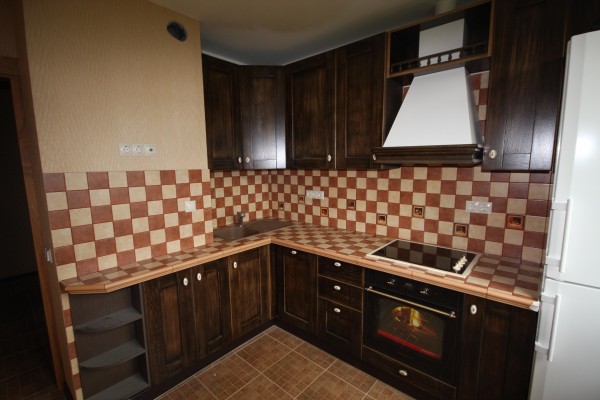
To summarize the story about which tiles are best for the kitchen, we must say the following. Sometimes consumers go to extremes: wanting to save money, they purchase cheap goods from dubious manufacturers or, in search of quality, overpay for a well-known brand. Both decisions can hardly be called reasonable. We advise you to pay attention to tiles in the mid-price category, from which you are guaranteed to be able to choose decent samples.
It is difficult to equip a kitchen, since the kitchen is a wet area. Having taken up this matter, you first need to think hard about how to choose the finishing material suitable for the kitchen. Builders agree that tile is better suited for this purpose than other materials.
It is not possible to lay parquet, laminate or parquet boards on the kitchen floor, since wood materials absorb water and are destroyed under its influence. Therefore, the only question that remains before the home owner is how to choose tiles for the kitchen.
Porcelain tiles for floors are an ideal finishing material that hides all surface imperfections
To decide which tile is better, you should pay attention to the technical parameters of the purchased material, then - to appearance, and only then – on the cost. Modern stores sell both matte and glossy tiles of the most different types, sizes, thickness. It differs in terms of color and texture, and technical characteristics. You should pay attention to the technical characteristics first of all.
Material Specifications
The first and main parameter by which floor tiles for the kitchen are selected is the hardness indicator. Hardness is measured using the Mohs scale, which includes 10 points. The first degree of hardness is talc, the second is gypsum, and so on. The highest hardness values are found in corundum (9 points) and diamond (10 points). Builders generally use material with a strength rating of 7 on the Mohs scale or higher. This is important, since the kitchen floor constantly “endures” very serious loads from people walking on it and from household appliances, which stands there.
Hardness is an indicator that directly affects the price of the product being described.
Despite this obvious fact, you should not save too much in this regard. If you choose tiles that are too soft, they will wear out very quickly and you will have to pay twice. Such “savings” are not savings in principle.
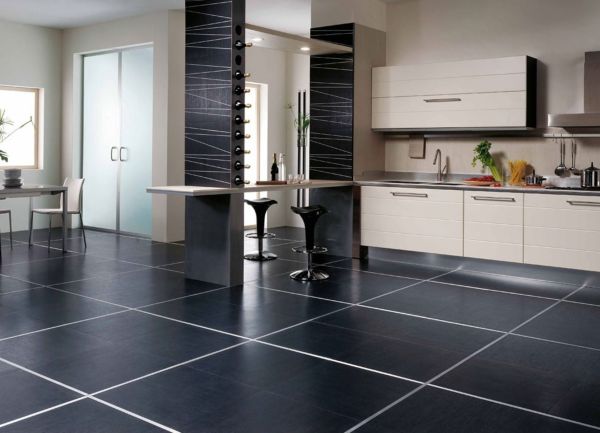
The second important parameter is wear resistance. Wear resistance affects the price of a ceramic floor in the same way as hardness. There are five wear resistance classes. For kitchen floors, it is recommended to purchase a second or third class ceramic coating. It is not cost-effective to purchase the most wear-resistant matte or glossy floor tiles. The friction coefficient indicator is worthy of attention. A value of 0.75 units is considered safe. This option is suitable for the kitchen.
People inexperienced in construction often believe that glossy tiles have the lowest coefficient of friction, and matte tiles have the highest. This is not true; the friction coefficient depends little on the texture. There is also such a parameter as resistance to chemicals.
Finding out which floor tiles cope better with chemicals is very simple: as with other parameters, there is a special marking. Both matte and glossy tiles have this marking. A person furnishing his kitchen should choose either class A or class AA. With such chemical resistance, the floor will last quite a long time.
Ceramic floors in composition
Not only physical parameters are important, but also the appearance of the floor in the kitchen. It is important to decorate the kitchen so that the finishing elements and furniture form a single composition and do not contrast too much with each other. For example, if the entire room is decorated in green, blue glossy tiles will look ridiculous against the background of the walls. The matte variety will look just as ridiculous. yellow color on a gray background, for example. From the kitchen you need to make a full-fledged composition, each element of which brings its own characteristics to its overall appearance.
Before choosing colors, you need to consult with a professional designer so as not to make a mistake.
If this is not possible, you should explore thematic forums. With the help of thematic forums, you can choose a good option, proven by time and the practice of other people.
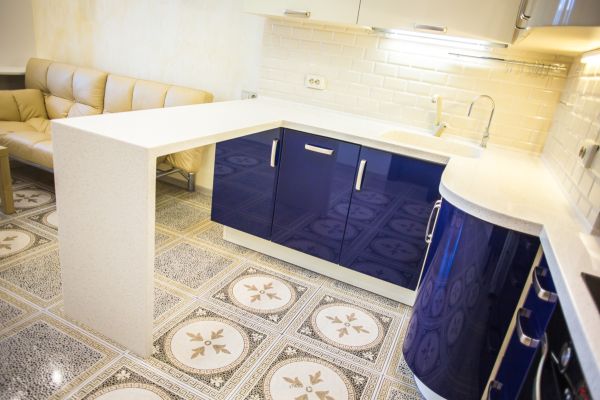
Texture is no less important criterion for finding a suitable product than color. Glossy texture is good in cases where the rest of the kitchen decoration has a similar texture. For example, glossy tiles harmonize perfectly with stretch ceilings of similar texture. Many experts say that a matte texture is better. The matte texture expands the range of use of the floor covering.
In addition, it is typical for coatings that have safe friction indicators. Matte tiles can have a color similar to the color of wood or laminate, so you can choose it if you do not have the financial ability to buy a different coating. At the same time, gloss is suitable for simulating granite, marble or other types of stone.

How not to make a mistake with the choice?
When purchasing tiles for the kitchen floor, people often make serious mistakes. When deciding which tiles will decorate the kitchen, under no circumstances should you do the following:
- Buy “back to back”, without stock. This is the biggest mistake that can be made during repairs in principle. No matter how good the craftsman is who undertakes to lay tiles in the kitchen, no matter how good the material purchased for this purpose, in the vast majority of cases some of the material deteriorates during the installation process. That is why it is recommended to make a small reserve.
- Unconditionally trust the calculations carried out by specialists of the selling party. Accidentally or intentionally, specialists working for the seller may make an error in the calculations, and then something will have to be done with the surplus.
- Hoping that the excess will be returned. This point is largely related to the previous one. It's rare that flooring stores agree to refund money. The surplus can be used for other purposes, but harassing stores with demands for refunds is a bad idea.
- Unconditionally trust the seller regarding the quality of the purchased product. There is an old saying, “trust but verify.” This is where it comes in handy: the seller may intentionally or unintentionally release a damaged product, or a product of the wrong color. Also, by mistake, not glossy, but matte tiles, for example, may be issued. You must look at the product in advance without fail. .
- Take the choice of sizes lightly. Many people think that the dimensions of individual elements of floor tiles are not important, and they are cut as they please. In fact, this is true, but you have to pay for it. You will also have to spend a lot of time and effort on this. It is better to think in advance and choose a size that will go well with the overall interior of the kitchen.
- Think only about the beauty of the tile, but not think about its technical characteristics. When choosing a floor covering, it is better to sacrifice your aesthetic preferences a little if the technical characteristics of the product do not meet your expectations.
If the product is purchased in a regular store, you should think about transportation, provided that the store does not offer its own transport.
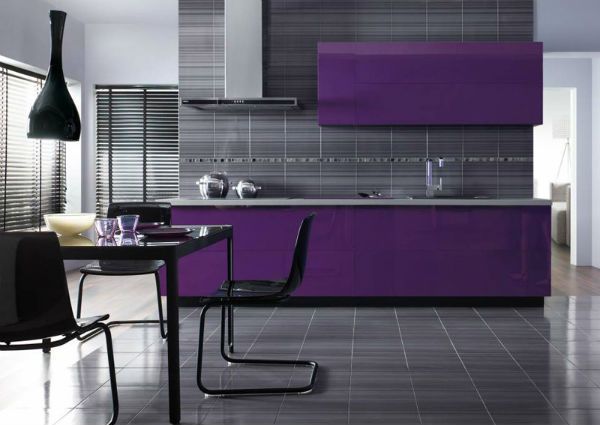
A little about prices
You can buy kitchen floor tiles at a variety of prices. The entire set of criteria described above directly affects the price. How to choose tiles for the kitchen floor based on price? To do this, you just need to compare real financial capabilities and real needs. Some people make the mistake of buying tiles beyond their means and, as a result, have problems in other areas of repair.
Kitchen flooring is important, but you shouldn't spend more money on it than necessary. Before choosing which tile to install, it would be a good idea to study the market and find out how much matte and glossy tiles cost in competing stores. You can also ask the opinion of experts on various forums about which tiles are best to install in the kitchen.
sale of floor tiles in the online store profiplitka.ru



















